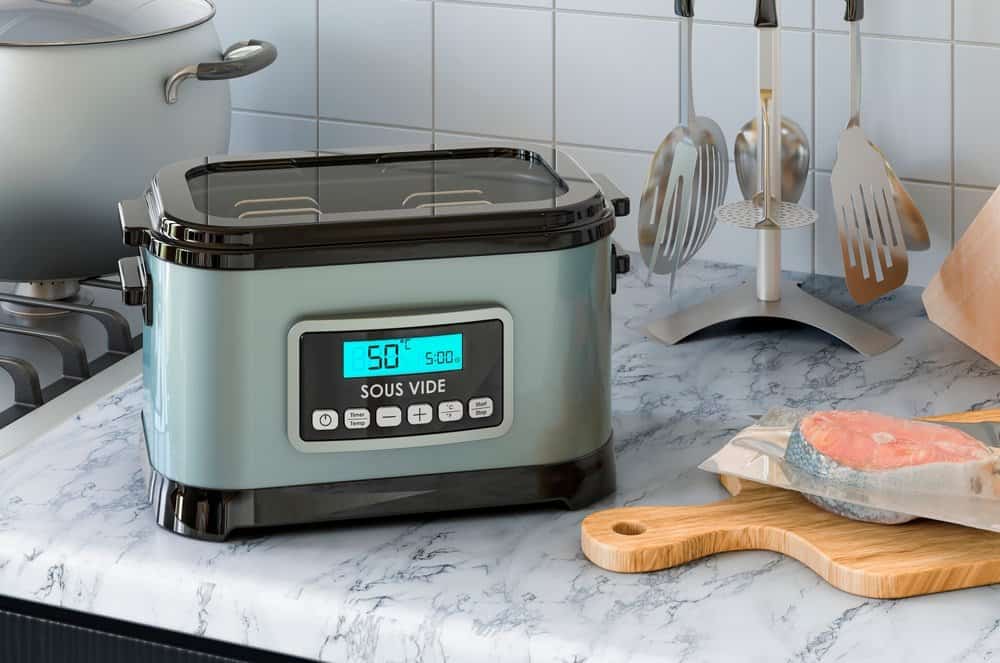What Is a Sous Vide Water Oven?
Are you looking into getting one of your own sous vide cookers at home? From your research, maybe you’ve learned that it comes down to two types of devices: immersion circulators and water ovens.
I’ve explained sous vide immersion circulators already, so what is a sous vide water oven? Here, I’ll aim to help you better understand what a sous vide water oven is, and how it compares to a sous vide immersion circulator.

What Is a Sous Vide Water Oven? How Is It Different To an Immersion Circulator?
Water ovens, also referred to as countertop water baths, are the type of sous vide machine that looks like a microwave. They’re much larger and boxier because they’re self-contained with a built-in water bath (unlike immersion circulators, which need a separate container).
Though sous vide water ovens still do a great job at heating up water to a precise temperature, they don’t circulate water like the sous vide immersion circulators. This can be seen as a downside, as it doesn’t ensure even temperature throughout the water bath to make sure you get an even cook and proper texture.
On the plus side, though, sous vide water ovens have a lid, which is a feature you don’t have when using a sous vide immersion circulator. Having a lid prevents water from evaporating out and gives you better insulation. You also don’t have to worry about food bags floating and not staying completely submerged. That being said, with an immersion circulator, you can get a specialized sous vide container with a lid.
As I mentioned, sous vide water ovens are large and boxy, and they’re about the size of a microwave. This is something to consider if you have a small kitchen at home. You definitely have to make sure you have the space for it. Immersion circulators on the other hand, are pretty small and compact. You can fit one in your kitchen drawer and not have to look at it until you want to use it.
Finally, something to note is that sous vide water ovens come at an overall higher price range compared to immersion circulators.
Not surprisingly, considering how slow cookers are designed, many people have wondered if they can basically use their slow cookers they already have at home at sous vide water ovens. Click here to learn more.
How Do You Use a Sous Vide Water Oven?
Using a sous vide water oven is an overall similar process to using a sous vide immersion circulator. The main difference is that it requires less setup.
Here are the steps to using a sous vide water oven:
- Fill the water oven with water
- Turn on the water oven and set it to your desired temperature
- Season and bag food, making sure the air is removed from the bags
- Place sealed bags into the water oven, close the lid, and start the machine
As you can see, it’s an even simpler process to use a water oven compared to an immersion circulator. You don’t have to clamp anything or clip the bags anywhere to make them stay fully submerged, which is pretty nice.
In Summary
Overall, sous vide water ovens are great if you have the space for them. They make the already simple process of sous vide cooking even easier.
However, not having a circulator function is definitely a downside and something to consider. It all comes down to what specs are important to you as a home cook and what foods you want to cook with it.









